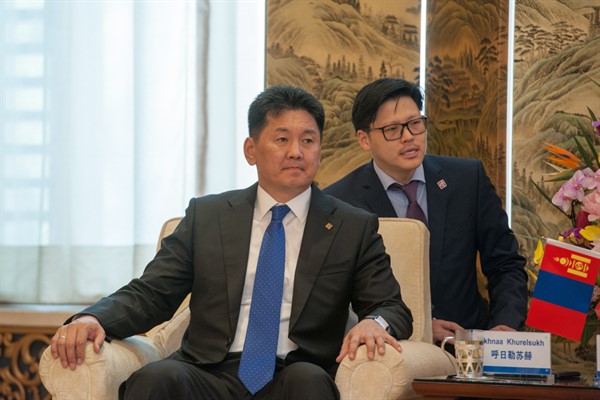In a presidential election on June 9, voters in Mongolia handed a landslide victory to former Prime Minister Ukhnaagiin Khurelsukh of the ruling Mongolian People’s Party, or MPP. Buoyed by a strong campaign in which he promised to firmly address the country’s endemic corruption, empower its youth and equitably allocate its rich natural resources, Khurelsukh took 67 percent of the vote—the largest winning share since Mongolia’s democratic transition in 1990. He was sworn in last Friday and will be the first president to serve a single six-year term under a 2019 constitutional amendment, passed by the MPP-dominated parliament, that did away with the previous system of renewable four-year presidential terms. With the MPP also in control of the Cabinet, Khurelsukh’s victory consolidated the party’s control over the three main levers of political power in Mongolia.
Khurelsukh’s predecessor, Khaltmaagiin Battulga of the main opposition Democratic Party, or DP, was ineligible to run for reelection due to the 2019 constitutional amendment and recent changes to Mongolia’s election law. Many opposition figures and commentators warned against the MPP’s efforts to consolidate power, claiming that the fate of Mongolia’s democracy was at stake in this election. In reality, though, the DP’s own weaknesses and divisions were a major factor in its defeat. The party’s candidate, Sodnomzunduiin Erdene, came in third with a dismal 6 percent. The No. 2 finisher, with 20 percent, was internet entrepreneur Dangaasurengiin Enkhbat, who ran under the banner of the relatively new National Labor Party.
In some ways, these results suggest an erosion of the traditional two-party system that prevailed for much of the past three decades, in which the MPP and the DP dominated the political landscape. However, this year’s election also saw nearly 6 percent of voters turn in a blank or spoiled ballot, more than in any previous Mongolian presidential election, suggesting that a significant amount of voters were unhappy with their choices.

